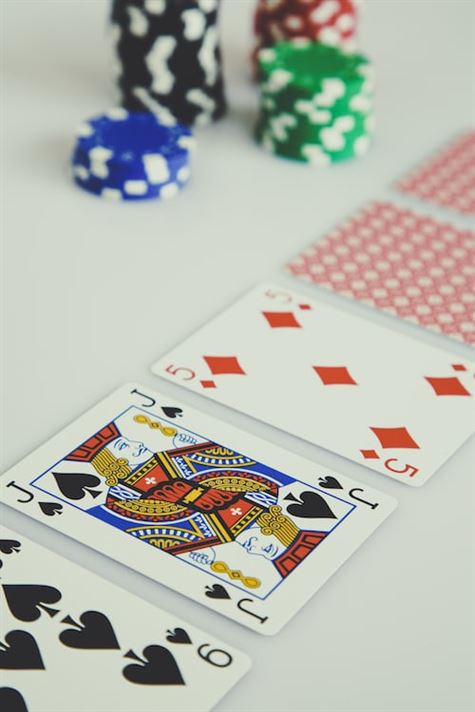The Art of Range Construction: Analyzing Hand Equities and Frequencies is a comprehensive guide that delves into the intricacies of constructing optimal ranges in various poker formats. This guide explores the fundamental concepts and strategies involved in analyzing hand equities and frequencies, providing players with the necessary tools to make informed decisions at the poker table. By understanding the principles outlined in this guide, players can enhance their range construction skills and improve their overall poker game.
The Importance of Hand Equities in Poker Range Construction
Hand equity refers to the percentage chance that a particular hand will win against another hand or range of hands. It is a measure of how strong a hand is relative to the other possible hands that may be in play. For example, if a player has a pair of aces, their hand equity against a random hand is approximately 85%. This means that, on average, their hand will win 85% of the time against a random hand.
Understanding hand equities is essential for constructing ranges because it allows players to assess the strength of their own hands and make informed decisions. By knowing the equity of their hand, players can determine whether it is worth continuing in a hand or folding. For example, if a player has a weak hand with low equity, it may be more profitable for them to fold rather than continue playing and risk losing more chips.
Hand equities also play a crucial role in analyzing the range of hands that an opponent may have. By considering the equities of different hands, players can narrow down the possible range of hands that their opponent may be holding. For example, if an opponent raises pre-flop and continues to bet aggressively on the flop and turn, their range is likely to consist of strong hands with high equities. This information can help a player make better decisions about whether to continue playing or fold.
In addition to hand equities, frequencies are another important factor to consider when constructing ranges. Frequencies refer to how often a player takes a particular action, such as betting, raising, or folding. By analyzing frequencies, players can gain insights into their opponents’ playing styles and tendencies.
For example, if a player consistently raises pre-flop and continuation bets on the flop, they may have a high frequency of aggressive actions. This information can help a player determine the range of hands that their opponent is likely to have. If their opponent has a high frequency of aggressive actions, their range is likely to consist of strong hands. On the other hand, if their opponent has a low frequency of aggressive actions, their range may consist of weaker hands.
Understanding Hand Frequencies for Effective Poker Range Construction
Hand frequencies refer to the likelihood of being dealt a particular hand in a given situation. This information is essential for constructing ranges because it allows players to determine the strength of their opponents’ hands and make strategic decisions accordingly. By analyzing hand frequencies, players can identify the most common and strongest hands in a given situation.
To begin analyzing hand frequencies, it is important to understand the concept of equity. Equity refers to the share of the pot that a player expects to win on average based on the current situation. By calculating the equity of different hands, players can determine the strength of their own hand and compare it to their opponents’.
One way to analyze hand frequencies is by using software tools that provide detailed statistics and probabilities. These tools can calculate the likelihood of being dealt specific hands and provide insights into the expected value of different actions. By using these tools, players can make more informed decisions based on the probabilities and frequencies of different hands.
Another approach to analyzing hand frequencies is through experience and observation. By playing countless hands and observing the actions and outcomes, players can develop an intuitive sense of hand frequencies. This allows them to make educated guesses about the strength of their opponents’ hands and adjust their own strategies accordingly.
When constructing ranges, it is important to consider both the absolute and relative frequencies of different hands. Absolute frequencies refer to the likelihood of being dealt a specific hand, while relative frequencies compare the likelihood of one hand to another. By considering both absolute and relative frequencies, players can construct ranges that are balanced and difficult to exploit.
Balancing ranges is crucial in poker because it prevents opponents from easily determining the strength of a player’s hand. By including a mix of strong and weak hands in their range, players can keep their opponents guessing and make it more difficult for them to make accurate decisions. Balancing ranges also allows players to bluff effectively and extract value from their opponents.
In addition to hand frequencies, it is important to consider other factors when constructing ranges. These factors include position, stack sizes, and the tendencies of opponents. By taking these factors into account, players can adjust their ranges to maximize their chances of success in different situations.
Strategies for Analyzing Hand Equities in Poker Range Construction
When constructing a range, it is important to consider the equity of each hand. Hand equity refers to the likelihood of a hand winning against other possible hands. This can be calculated using various tools and software, or by relying on experience and intuition. By assigning a numerical value to each hand’s equity, players can compare and rank them to determine which hands are most valuable in a given situation.
Equity is not the only factor to consider when constructing a range. Frequency also plays a crucial role. Frequency refers to how often a hand should be played in a given situation. This can be influenced by factors such as position, stack size, and the actions of other players. By analyzing these variables, players can determine the optimal frequency for each hand in their range.
To construct an effective range, players must also consider the concept of balance. Balance refers to the distribution of strong and weak hands in a player’s range. A balanced range is one that contains a mix of strong and weak hands, making it difficult for opponents to predict the player’s actions. By maintaining a balanced range, players can keep their opponents guessing and gain an edge in the game.
Analyzing hand equities and frequencies requires a deep understanding of the game and its mathematical principles. It involves considering a wide range of variables and making informed decisions based on the available information. This process can be time-consuming and challenging, but it is essential for success in poker.
There are several strategies that players can use to analyze hand equities and frequencies. One common approach is to use software or online tools that calculate hand equities and provide recommendations for optimal play. These tools can be a valuable resource for players looking to improve their range construction skills.
Another strategy is to study and analyze hand histories from previous games. By reviewing past hands, players can identify patterns and trends that can inform their range construction decisions. This can be particularly useful for identifying common mistakes and areas for improvement.
In addition to these strategies, players can also benefit from studying and learning from experienced players. Many professional poker players share their insights and strategies through books, articles, and online forums. By studying the approaches of successful players, players can gain valuable insights and improve their own range construction skills.
Advanced Techniques for Poker Range Construction: Hand Equities and Frequencies
To analyze hand equities, players can use various tools and techniques. One popular method is to use software programs that simulate thousands of poker hands and calculate equities based on the specific cards dealt. These programs can provide valuable insights into the strength of different hands and help players make more informed decisions.
Another important aspect of range construction is understanding hand frequencies. Hand frequencies refer to how often certain hands occur in a given situation. By analyzing hand frequencies, players can gain a better understanding of the likelihood of certain hands being present in their opponents’ ranges.
Hand frequencies can be influenced by various factors, such as the number of players at the table, the stage of the game, and the betting patterns of opponents. By considering these factors, players can make more accurate assumptions about the hands their opponents are likely to have.
Analyzing hand equities and frequencies is not a one-size-fits-all approach. It requires a deep understanding of the game and the ability to adapt to different situations. Players must consider a range of factors, such as their position at the table, the size of the pot, and the playing styles of their opponents.
One common strategy in range construction is to assign a range of possible hands to each opponent based on their actions and betting patterns. By narrowing down the possible hands an opponent could have, players can make more accurate decisions and increase their chances of success.
In addition to analyzing hand equities and frequencies, players must also consider the concept of balance in range construction. Balance refers to the distribution of strong and weak hands in a player’s range. A balanced range is important because it makes it more difficult for opponents to accurately read a player’s hand.
Achieving balance in range construction requires careful consideration of hand selection and betting patterns. Players must mix strong and weak hands in their range to keep their opponents guessing. By doing so, players can create uncertainty and make it more difficult for opponents to exploit their strategies.
However, achieving perfect balance is not always necessary or even desirable. In certain situations, players may choose to deviate from a balanced range to exploit specific weaknesses in their opponents’ play. This requires a deep understanding of the game and the ability to adapt to different situations.
Mastering Poker Range Construction: Analyzing Hand Equities and Frequencies
Hand equities refer to the likelihood of a particular hand winning against other possible hands. This is determined by factors such as the cards on the table, the number of players, and the betting patterns. Analyzing hand equities allows players to assess the relative strength of their hand and make decisions accordingly.
To analyze hand equities, players can use various tools and techniques. One common method is to use poker software that calculates equities based on the specific hand and board cards. These tools provide valuable insights into the probability of winning with a given hand and help players make more informed decisions.
Another important aspect of range construction is understanding hand frequencies. Hand frequencies refer to the likelihood of being dealt a particular hand. By understanding the distribution of hands, players can make more accurate predictions about the range of hands their opponents are likely to have.
Analyzing hand frequencies requires a deep understanding of poker statistics. Players need to be familiar with concepts such as the number of possible starting hands, the likelihood of being dealt specific hands, and the impact of community cards on hand distributions. By studying these statistics, players can gain a better understanding of the range of hands their opponents are likely to have.
Once players have analyzed hand equities and frequencies, they can use this information to construct their ranges. A range is a set of hands that a player is likely to have based on their actions and the information available. By constructing a well-balanced range, players can make it difficult for their opponents to accurately predict their hand and gain an advantage.
Constructing a range involves considering factors such as position, stack sizes, and the actions of other players. For example, a player in an early position may have a tighter range, consisting of stronger hands, while a player in a late position may have a wider range, including weaker hands. By adjusting their range based on these factors, players can exploit their opponents’ weaknesses and maximize their own chances of success.
In conclusion, the art of range construction is a crucial skill for any serious poker player. By analyzing hand equities and frequencies, players can make more informed decisions during gameplay. Understanding hand equities allows players to assess the relative strength of their hand, while analyzing hand frequencies helps predict the range of hands their opponents are likely to have. By constructing a well-balanced range, players can make it difficult for their opponents to accurately predict their hand and gain an advantage. Mastering range construction is a key step towards becoming a successful poker player.




